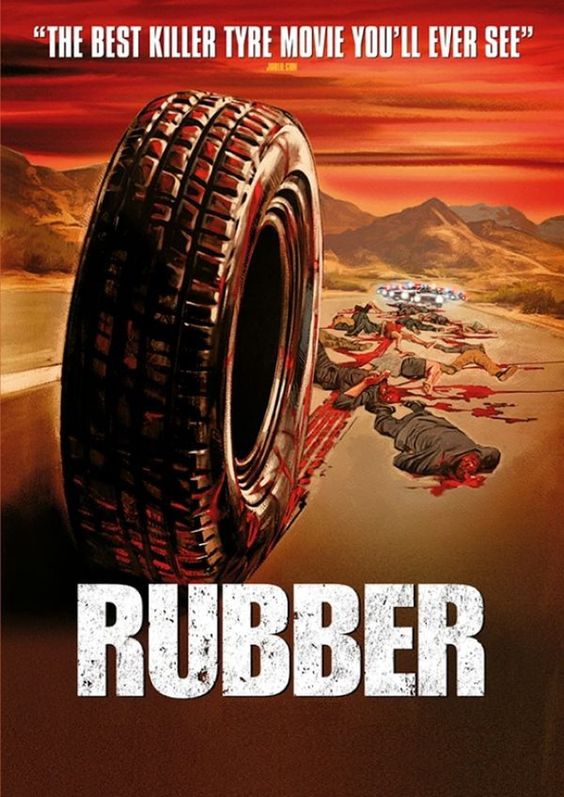
The movie opens with a desert road randomly strewn with simple wooden parsonage chairs facing in all directions. Next a car appears and begins deliberately swerving into the chairs, breaking each one of them, until it comes to a halt. At that point, a sheriff emerges (from out of the trunk?!) and knocks on the driver door where he is handed a full glass of water. The sheriff breaks the fourth wall and begins addressing the audience by speaking of the “no reason” principle of famous movies like E.T., Love Story and Texas Chainsaw Massacre. This narration immediately reminded me of the criminologist from Rocky Horror Picture Show, and I suddenly did not know what to expect from this movie.
I honestly think the less said about this film the better. Suffice it to say that Rubber is one part B-movie schlock, one part David Lynch, and one part Hitchcock. (Did I just actually go there?) On my first watching of the movie, I appreciated its style. The camera angles, the homage to Psycho, the riveting and unnerving sound track were somehow quite effective in producing suspense. Quite remarkable when the serial tire is a generic tire! Juxtaposed against this atmospheric cinematography was a very healthy dose of absurdity and dark humor. This makes for an extremely interesting viewing experience, where the audience switches abruptly from anticipation to laughter to abject confusion.
The sheriff tells us that there is “no reason” for this film. What a deceit! Because there is a reason for virtually everything – from the opening scene of the destruction of chairs, to the irony of a Nascar race, to the well placed remake of the song “Just Don’t Want to be Lonely” to (yes!) the turkey. Irony abounds even as our in character heroine proclaims that she cannot read the lines of dialog because they are garbage.
The second time I watched this movie, I focused on its true theme. I realized with delight that the movie is about movies and their audiences. Pay very close attention to every scene with the bystanders on the road and you will realize that the killer tire story is not the actual plot at all. Also, on second viewing, you can revel in the brilliant personification of the killer tire (Robert). A tire that learns, sleeps, recreates, dreams, and even has flashbacks to his previous inanimate incarnation on an actual car. Observe the film structure and use of the reflecting glass and incineration scene as key catalysts. You will be amazed at all you missed when first watching this movie.
